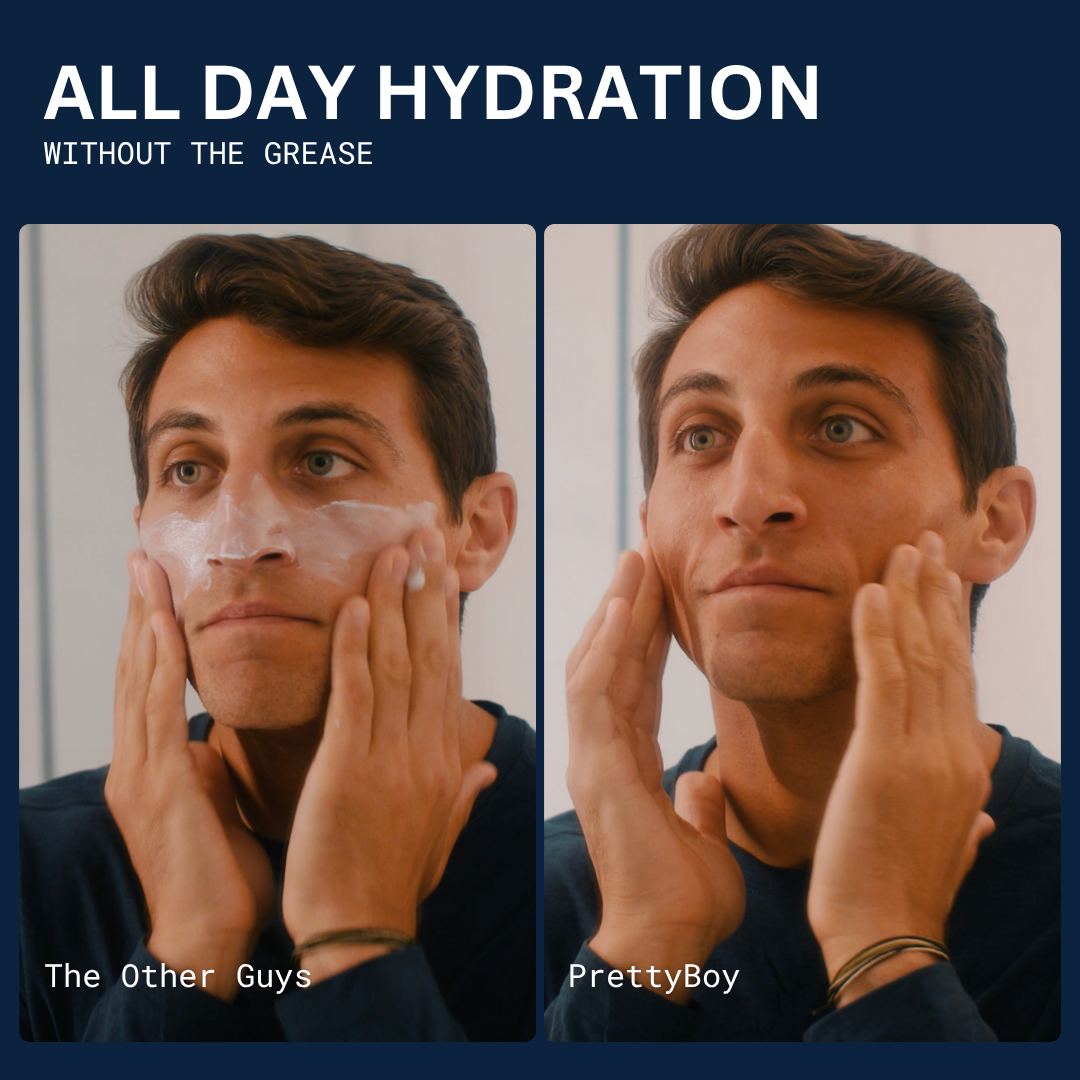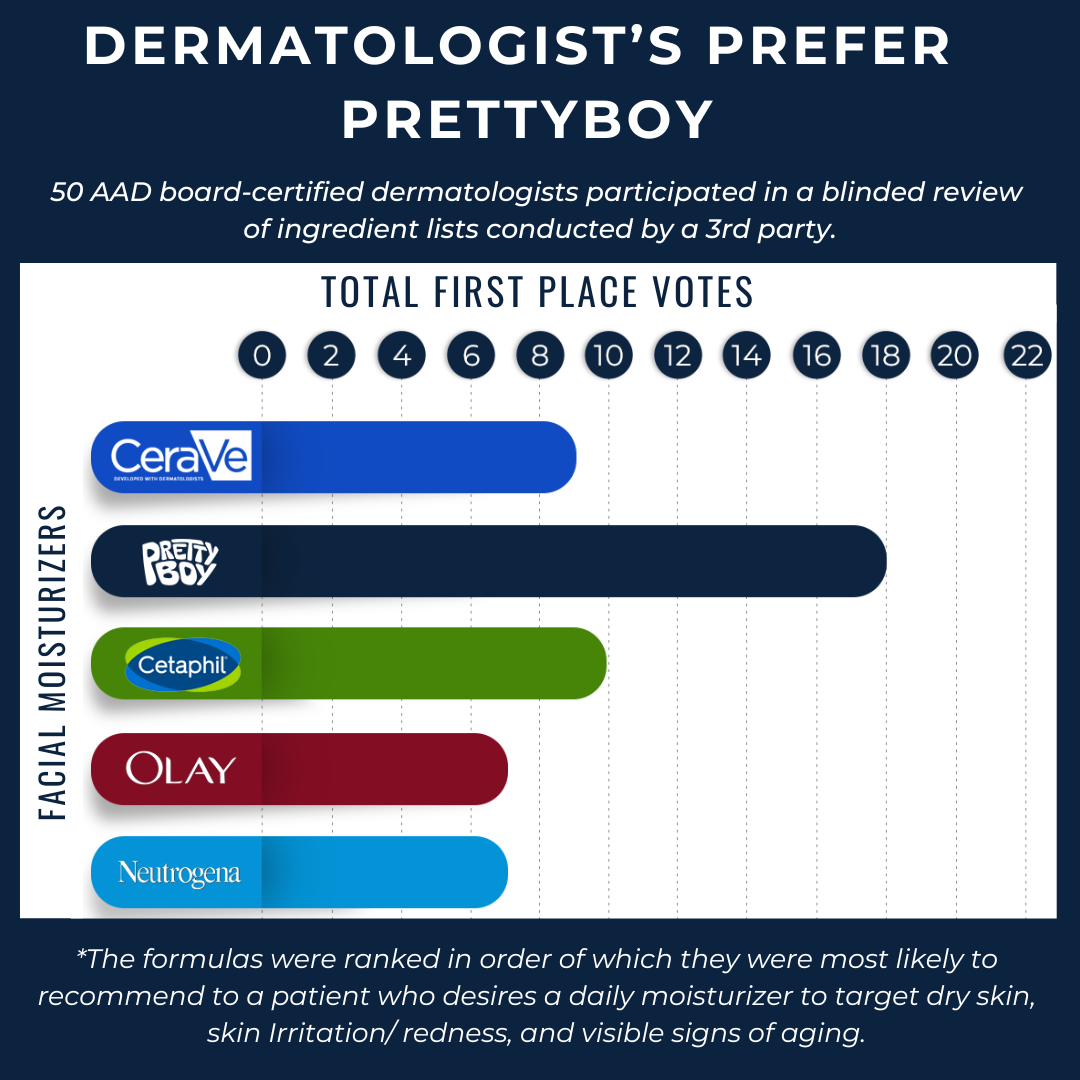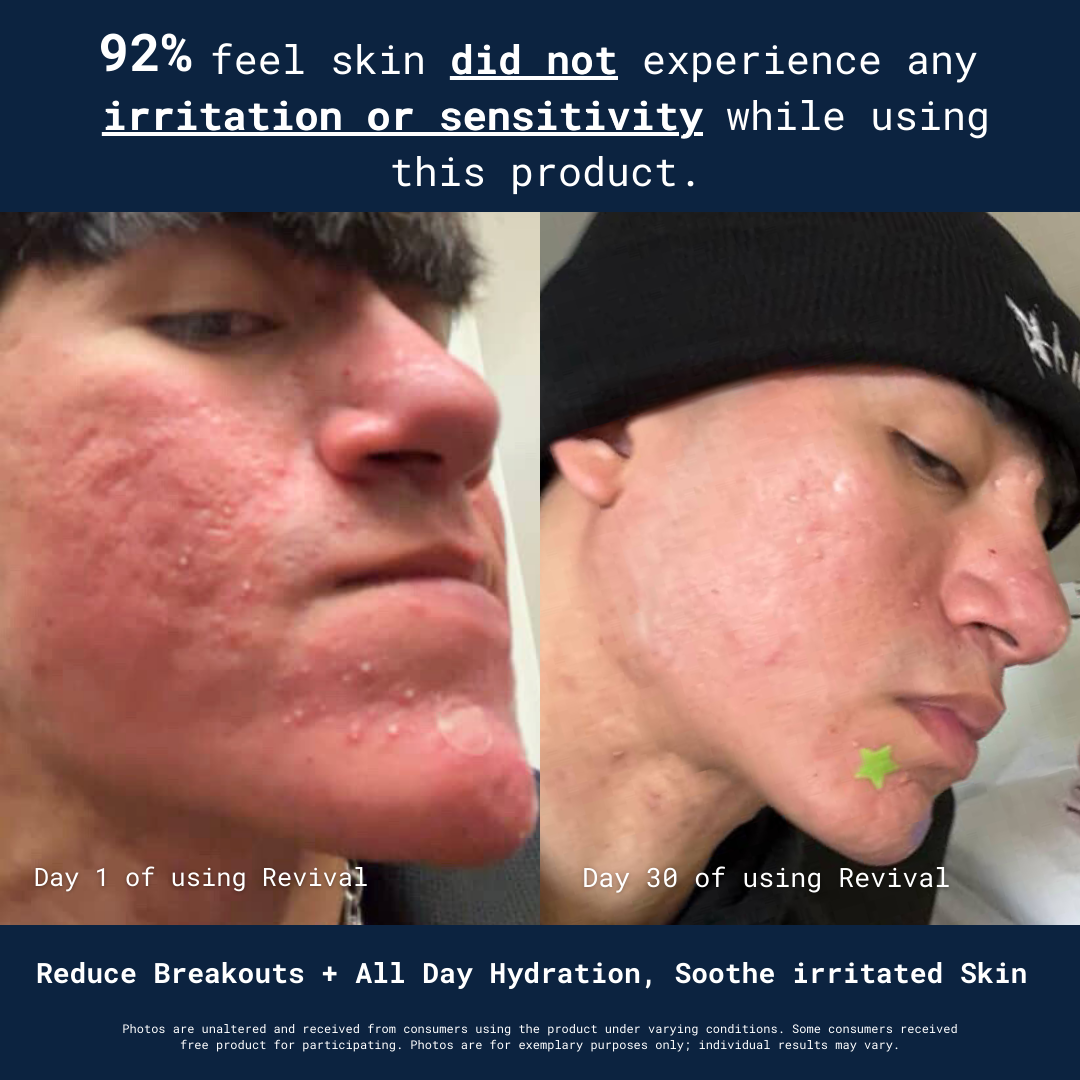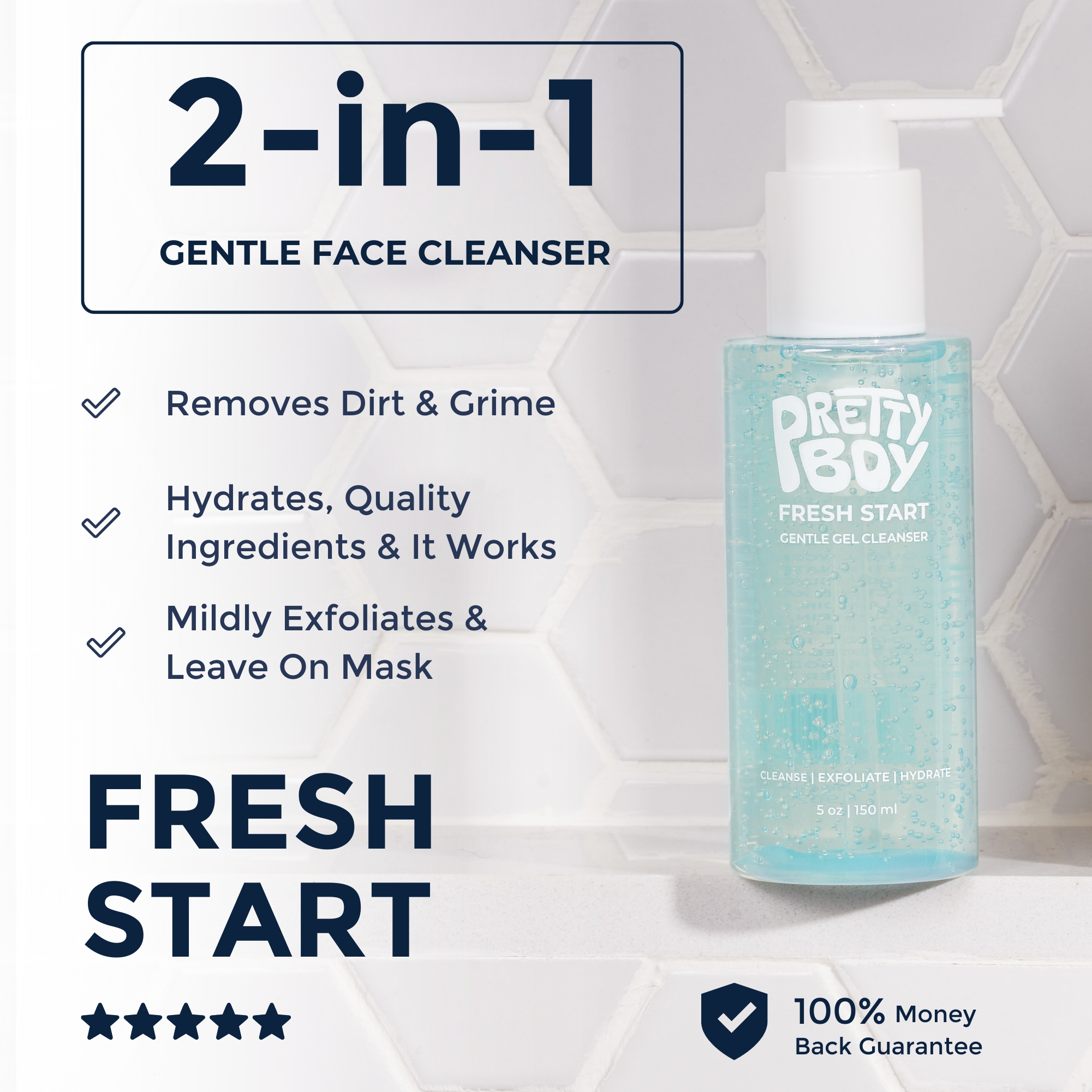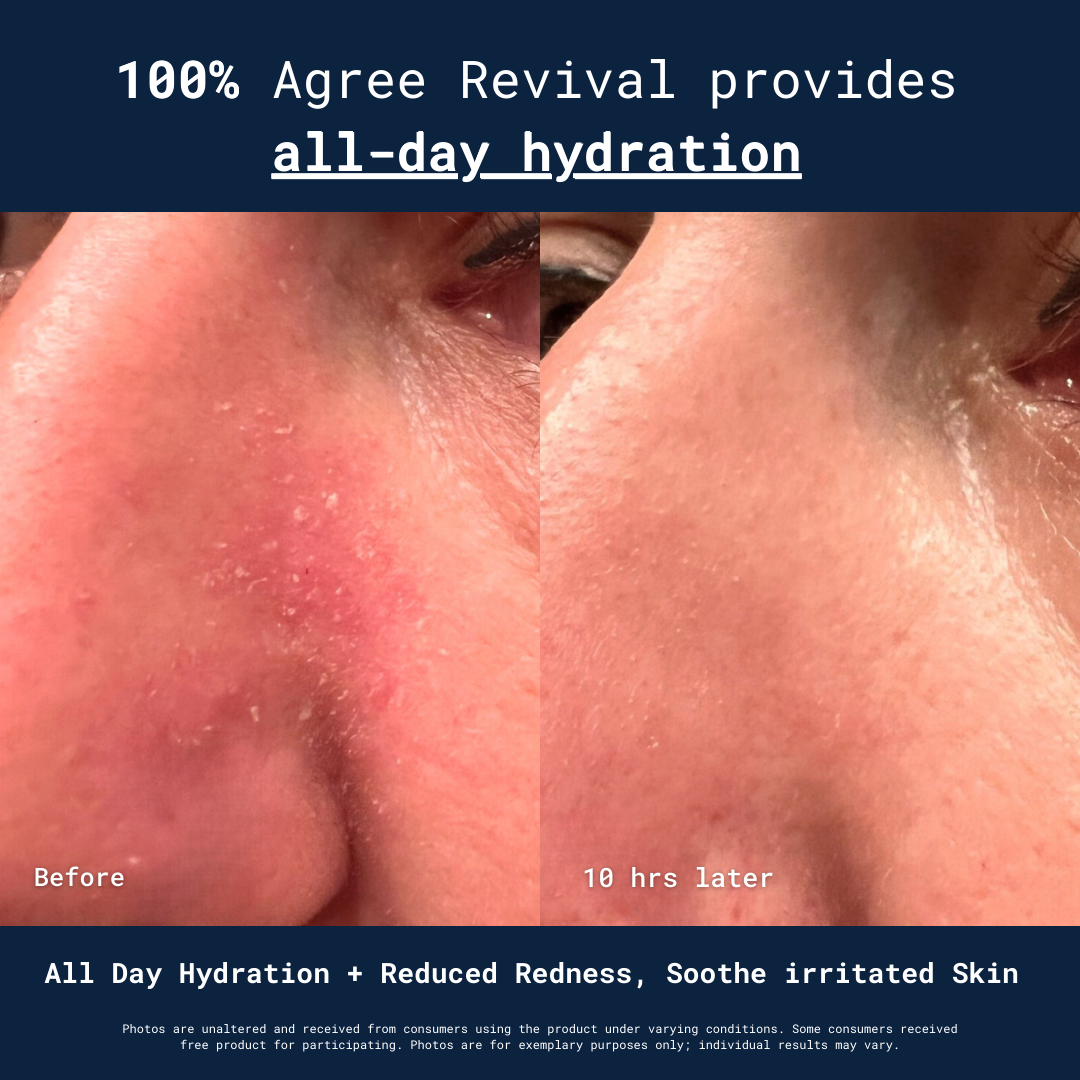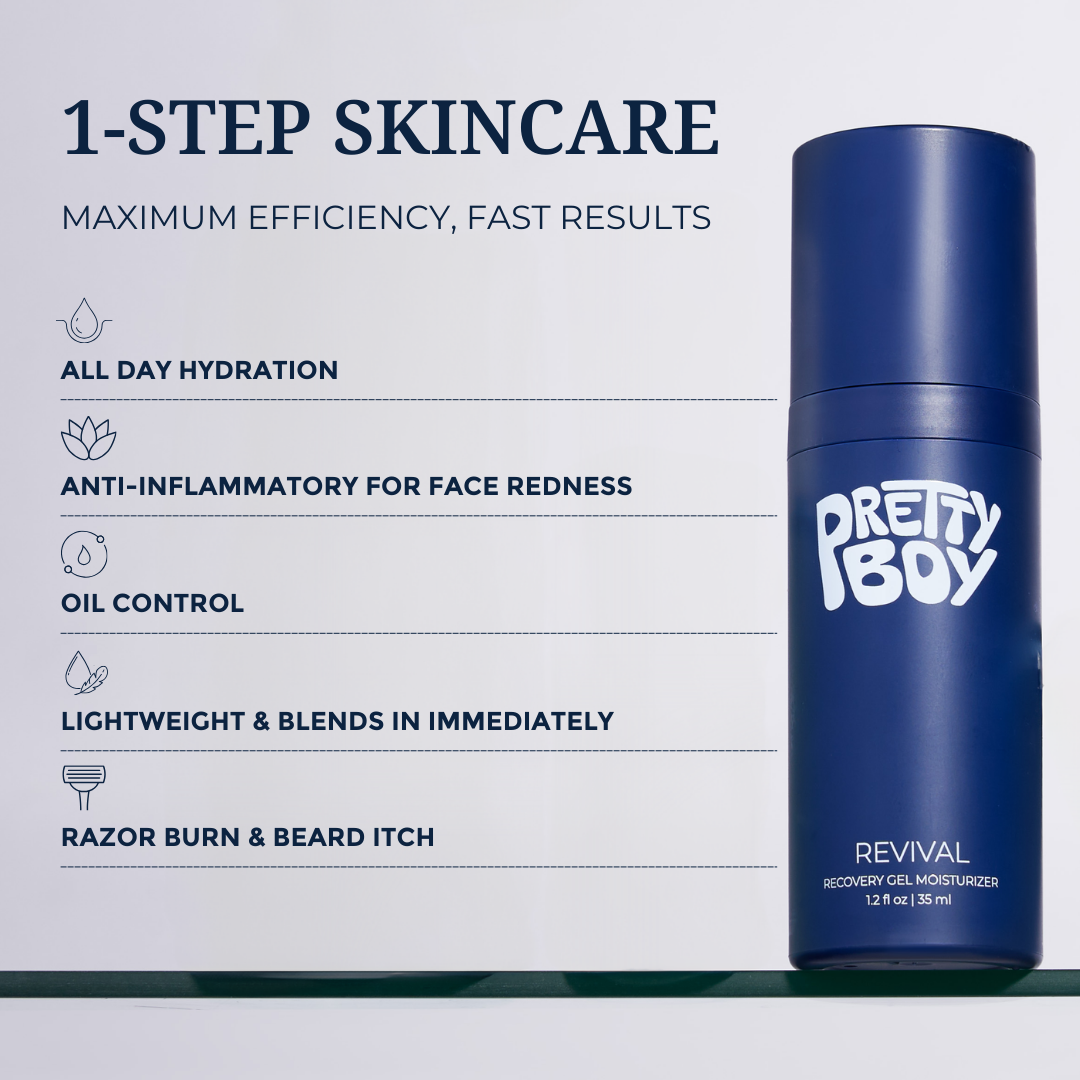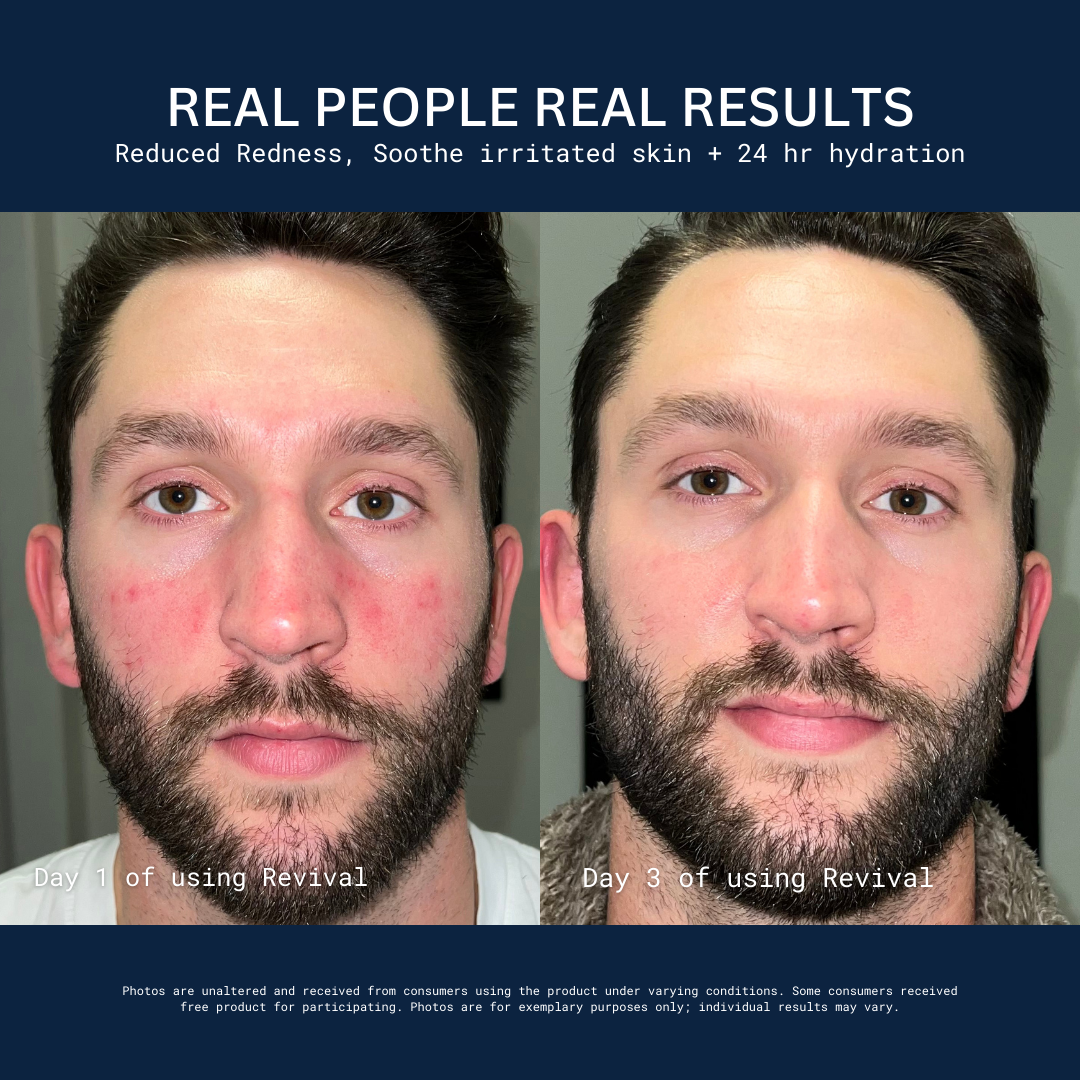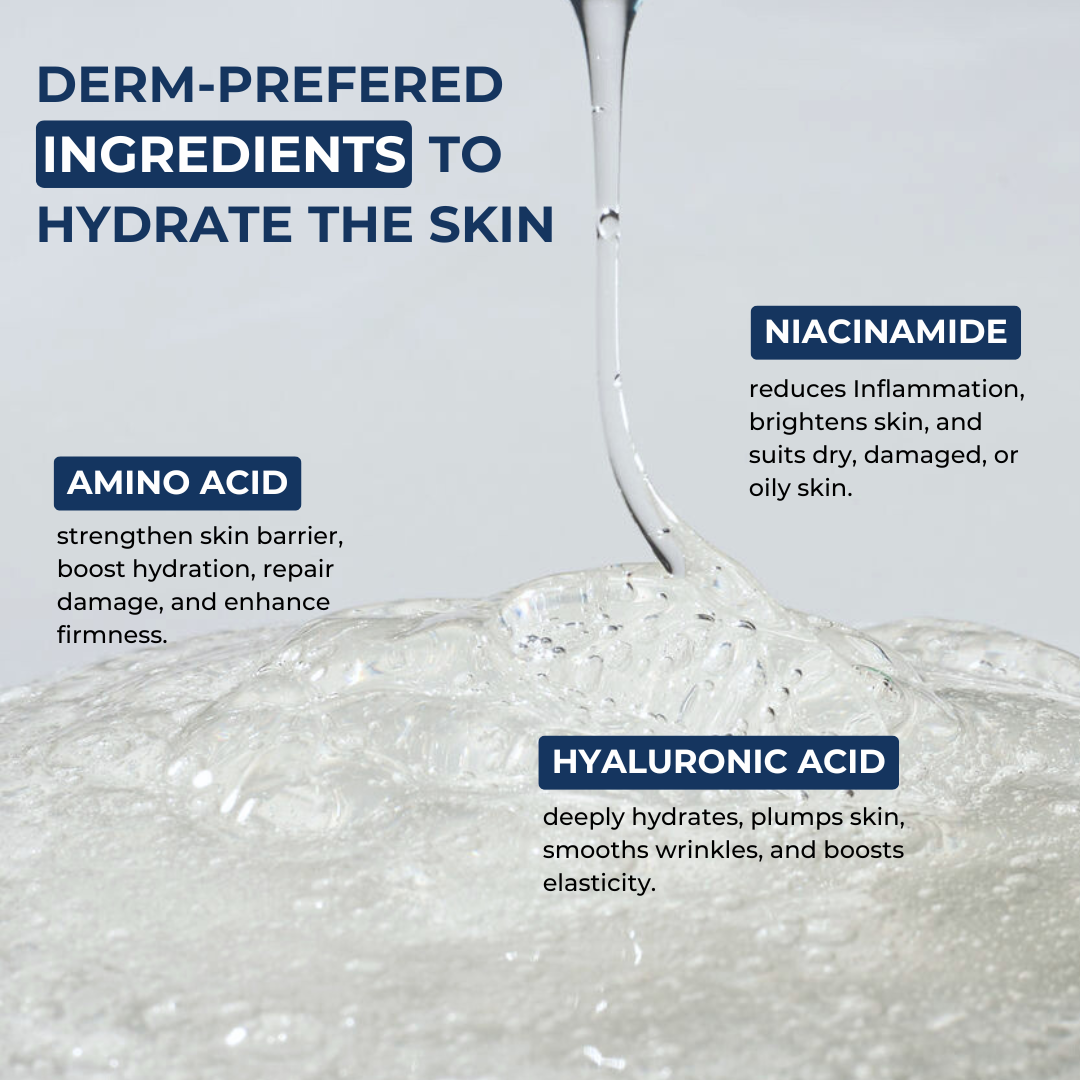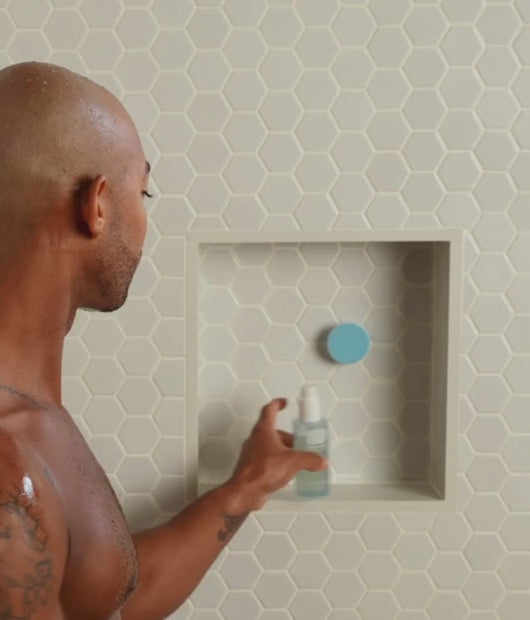Every day, millions of dudes go to battle with a layer of grease on their faces. Contrary to what you learned in your high school locker room or on Reddit, there are other ways to combat oily skin besides nuking your face with harsh soap or dabbing the grease off your forehead with a napkin (we’ve all been there).
Talk to any dermatologist and they’ll tell you the key to de-greasing your face isn’t removing the sebum from your face—it’s treating your skin from the inside out so your sebaceous glands don’t go into overdrive. One ingredient that can work wonders in that department is niacinamide: a type of vitamin B3 that pumps the breaks on sebum production.
Not to mention, niacinamide can naturally shrink your pores, treat acne, minimize redness, and treat hyperpigmentation. Bottom line: using niacinamide is a no-brainer if you have oily skin.
In this article, we’ll explain why niacinamide should be in your skincare rotation if you have oily skin, how to use it, and how it stacks up against other popular skincare ingredients.
Is Niacinamide Good for Oily Skin?
Niacinamide is a clutch ingredient for any skin type, but it’s especially great if you have oily skin. It’s a natural, easy-to-use ingredient that balances your moisture levels, reduces pores, slows signs of aging, and treats acne—all of which are common problems for dudes with oily skin.
Let’s break down 7 reasons you need niacinamide if you’re face is feeling a little too slick.
- Regulates oil: Niacinamide regulates the amount of oil your sebaceous glands churn out throughout the day, so you don’t look like the bottom of a pizza box at 3 pm.
- Keeps skin moisturized: Your skin produces excess oil when it’s dehydrated, but niacinamide locks in moisture so your face doesn’t trick itself into getting greasy.
- Treats acne: Niacinamide has been shown to help with acne, especially inflammatory types like papules and pustules.
- Shrinks pores: By controlling sebum production, niacinamide can prevent clogged pores, which is the root cause of crater-sized pores.
- Reduces redness: Niacinamide calms inflammation, which reduces redness from skin conditions like rosacea, acne, and eczema.
- Fades acne scars: Niacinamide can help remove the evidence of past acne breakouts by promoting collagen production, which is a fancy way of saying it helps generate new, healthy skin.
- Protects against UV damage: The sun wreaks havoc on sensitive skin, but niacinamide helps protect your skin from UV rays while also rebuilding damaged skin cells.
How to Use Niacinamide for Oily Skin
Now that you’re on the niacinamide bandwagon, you’re probably wondering how to use it. Good news: You don’t need a dermatology degree to work this stuff into your skincare routine. Just remember to do these two things every day.
Wash Your Face with a Niacinamide Cleanser
If you’re dealing with oily skin, it’s time to swap your discount body wash for a proper face cleanser that contains—you guessed it—niacinamide. This is like hitting the refresh button for your skin.
When you cleanse with niacinamide, you don’t just wash away the grime that built up overnight or during the day—you keep your oil levels under control, tighten your pores, and even out your complexion.
Apply a Gel-Based Niacinamide Moisturizer
The best complement to a niacinamide cleanser is a niacinamide moisturizer. To get the best results, go for a gel-based formula (no creams or lotions) with a 2-5% concentration of niacinamide.
Be warned: Not all niacinamide moisturizers are created equal. A lot of brands add a tiny amount of niacinamide into their formula just so they can brag about it in their marketing. But if you want to reap the benefits, you need a concentration between 2-5%, like our formula for Revival.
To use your niacinamide moisturizer, take a dime-sized amount and spread it evenly across your face and neck immediately after cleansing. Your skin is more absorbent when it’s wet, so this is the ideal time for it to soak up niacinamide. Apply the niacinamide moisturizer twice daily, once in the morning and again at night.
How Long Does It Take Niacinamide to Work for Oily Skin?
The amount of time it takes to see results from niacinamide depends on how oily your skin is to start with, but most people start to notice improvements after three weeks of consistent use.
You might begin to see a reduction in excess oiliness as niacinamide works its magic to keep sebum production in check. Plus, any redness or irritation should start to calm down, leaving your skin feeling more balanced and comfortable.
While some skincare superheroes deliver instant gratification, niacinamide prefers to take its time, but trust us, it's worth the wait.
What’s Better for Oily Skin: Niacinamide or Salicylic Acid?
Choosing between niacinamide and salicylic acid for oily skin is like picking your MVP for the skincare squad. Here's the breakdown:
Niacinamide is the calm, cool, and collected teammate. It helps regulate oil production, so it's great for keeping shine at bay. Plus, it has this knack for soothing any redness or irritation, making it a solid choice for sensitive oily skin types. And let's not forget about its pore-refining powers—it can tighten those suckers up and give your skin a smoother appearance.
Salicylic acid is the MVP for tackling acne and breakouts head-on. It's a superhero when it comes to unclogging pores and banishing zits. So, if you're dealing with frequent breakouts along with your oily skin, salicylic acid might be your go-to.
But here's the kicker: You don't have to choose just one. These two can actually team up and tackle oily skin and breakouts together.
What’s Better for Oily Skin: Niacinamide or Hyaluronic Acid?
It might seem like you're caught in a tug-of-war between niacinamide and hyaluronic acid, but they can actually be a dynamic duo in your skincare routine.
Niacinamide is like your oil-regulating guru, dialing down sebum production. Plus, it's got this calming vibe that soothes any redness or irritation.
Hyaluronic acid is the hydration hero. It's like a moisture magnet, drawing in water and locking it into your skin, plumping it up and giving it that juicy, hydrated look. Remember: even oily skin needs hydration. When your skin is properly moisturized, it's less likely to overcompensate by producing excess oil.
Bottom line: niacinamide and hyaluronic acid both belong in your skincare routine—that’s why we combined them in Revival.
Say Deuces to Oily Skin
Your parents might have screwed you with genetics that gave you greasy skin. But the good news is you can fight back with niacinamide. One pump of Revival gives you all the niacinamide you need to keep your moneymaker looking fresh 24/7. Grab a bottle and see why everyone from GQ journalists to board-certified dermatologists rave about Revival.
Revival Soothing Hydration Age Prevention









